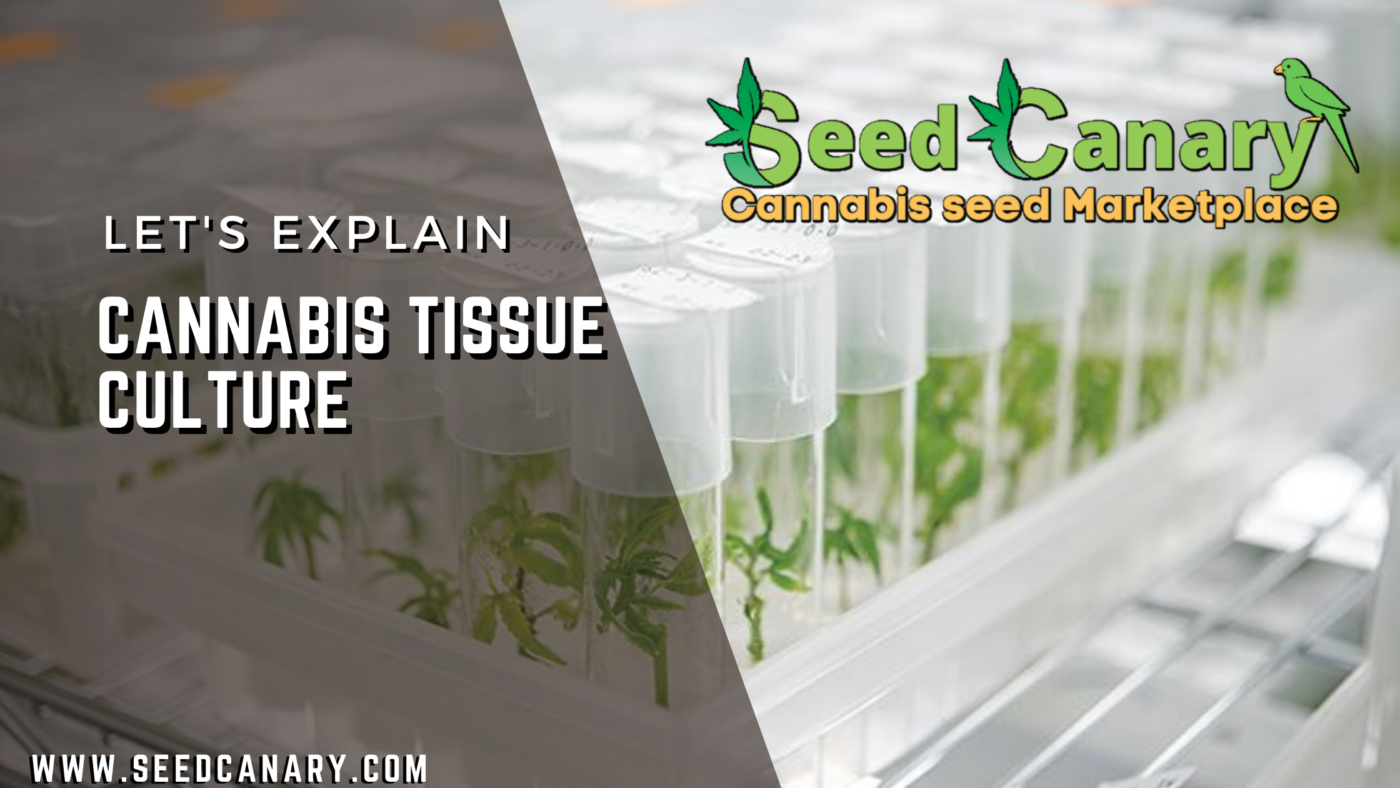Growing Cannabis, How To, Medical Marijuana
Cannabis Tissue Culture – Lets Explain.
Before using a Cannabis Tissue Culture had even been heard of, propagation was done solely by seeding or by using clones.
Commercial growers are likely to utilize this growing technique especially if they have found a plant that truly delivered quality cannabis. Using the tissue culture technique can allow you to grow the same genetics in a variety of ways so you can see what works best. This technique also allows these genetics to be preserved so that the grower can keep the culture around for continuous use. The fact that you won’t really have to worry about disease or pests is just another added benefit of tissue culture.
Advantages of using Tissue Cultures
- By following the protocol in a sterile environment, tissue culture plants are free from pests and disease but remain genetically identical to the original phenotype. Tissue culture provides growers with the ability to remove persistent infections from their grow.
- Tissue cultured plants may yield higher. With optimized genetics free from pests and disease plants can divert their energy resources into producing buds rather than fight disease.
- From a logistics standpoint, tissue cultures can easily be stored for long term continuous use.
- Product consistency is a present problem in the cannabis industry. With legalization spreading, consumers want a repeatable experience each and every time they consume cannabis coming from the same strain. By using genetically identical specimens free from disease, producers can deliver the same product EVERY TIME.
- As is the case with clones, tissue culture provides growers with a foolproof way to ensure a crop that’s entirely female and free from rogue male plants.
- Space requirements are much less for tissue-cultured plants. In standard growing operations, clones and mothers require a good amount of space. With tissue culture, growers now have a method of storing a library of genetics in a small confined place, where rather than requiring an entire grow room, they can store their genetics on a shelf.
Is Making A Cannabis Tissue Culture Easy?
The short answer is no, making tissue cultures are not easy as it requires a very sterile workplace to create successful cultures. However, it also isn’t all that hard to do from home. If you have the supplies and a small room that has limited airflow and has been sterilized, then you can produce these tissue cultures relatively easy.
Basic Tissue Culture Supplies
- Plant tissue – sample from the Cannabis plant
- Grow medium – usually a variation of Murashige and Skoog’s medium formula, sometimes combined with compounds like plant hormones or agar
- Test tubes or Jars – a place for plants to grow
- Sterilization equipment – A totally sterile environment is the #1 most important rule to success with plant tissue culture.
- Pressure cooker or microwave
- Autoclave for high-pressure heat sterilization
- Household bleach or alcohol (usually mixed with water)
- Forceps or tweezers – For grabbing and moving samples of the plant(s)
- Lighted area – a bright place or shelf for your new plants to grow
- Cool white or warm white fluorescent lamps – T8 grow lights work well
- Dimmed LED grow lights
- Heat source (stove or hot plate) – For preparing medium
- PH Test Kit – Test pH with strips or a pH Pen, and adjust with PH Up or PH Down
- Pure water – either water purification equipment or an extremely clean source of water
- bottled distilled water
- deionized water
- reverse osmosis water
An Easy Guide To Making Cannabis Tissue Culture Media
All of these ingredients can be easily found at your local grocery store/pharmacy, which is perfect for beginners or those just getting involved with plant tissue culture’s. This recipe comes from Plants from Test Tubes: An Introduction to Micropropagation.
What you Need
- 1/8 cup table sugar
- 1 cup tap water*
- 1/2 cup nutrient solution (1/4 tsp all-purpose 10-10-10 fertilizer dissolved in 1 gallon of water)
- 125-mg tablet of inosital (1/2 of a 250-mg tablet)
- 1/3 vitamin tablet with thiamine
- 2 tablespoons agar flakes
*Coconut milk can be substituted for tap water but growth will be somewhat different (could be good or bad depending on the type of plant, it’s currently unknown what effect it may have on cannabis)
- Combine ingredients in flask or beaker
- Boil while stirring until agar has liquidized
- Dispense medium into pint canning jars (or baby food jars)
- Cover and process in a pressure cooker for 15 minutes at 15 PSI
- Sterilize metal (non plastic) tweezers and razor blades in the cooker at the same time (wrap in aluminum foil before putting in cooker)
- Also sterilize pint jars of water (for explant cleaning)


